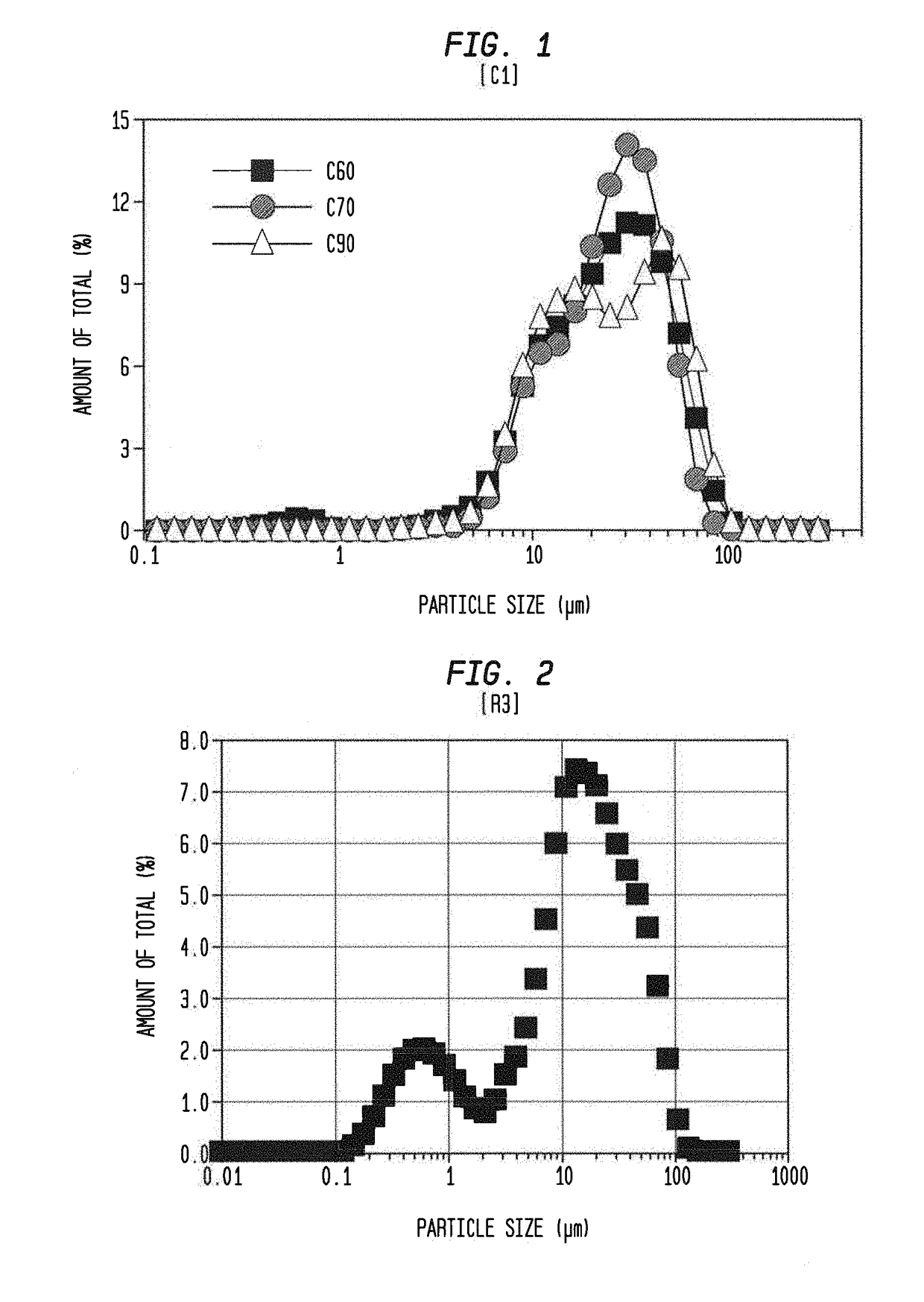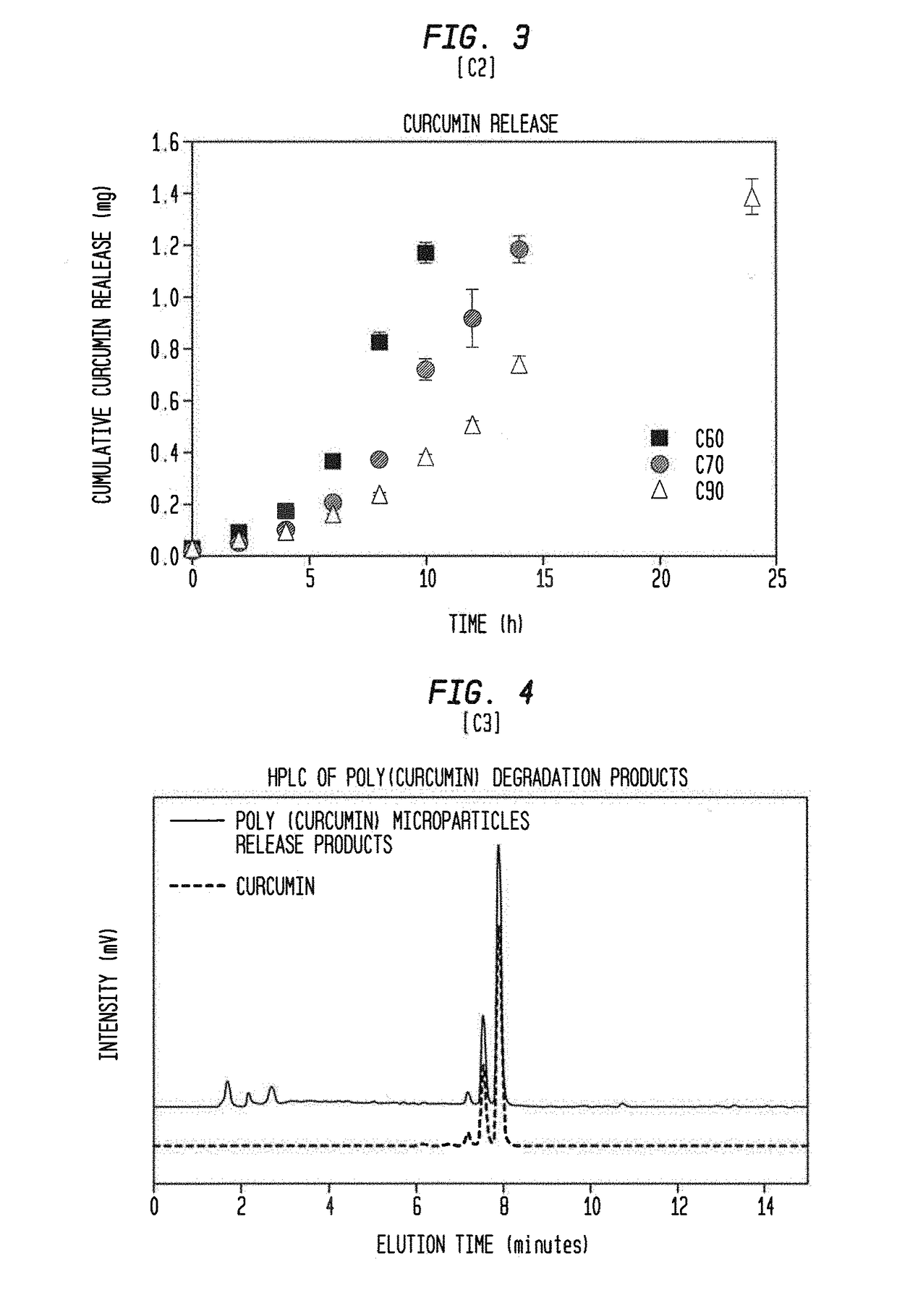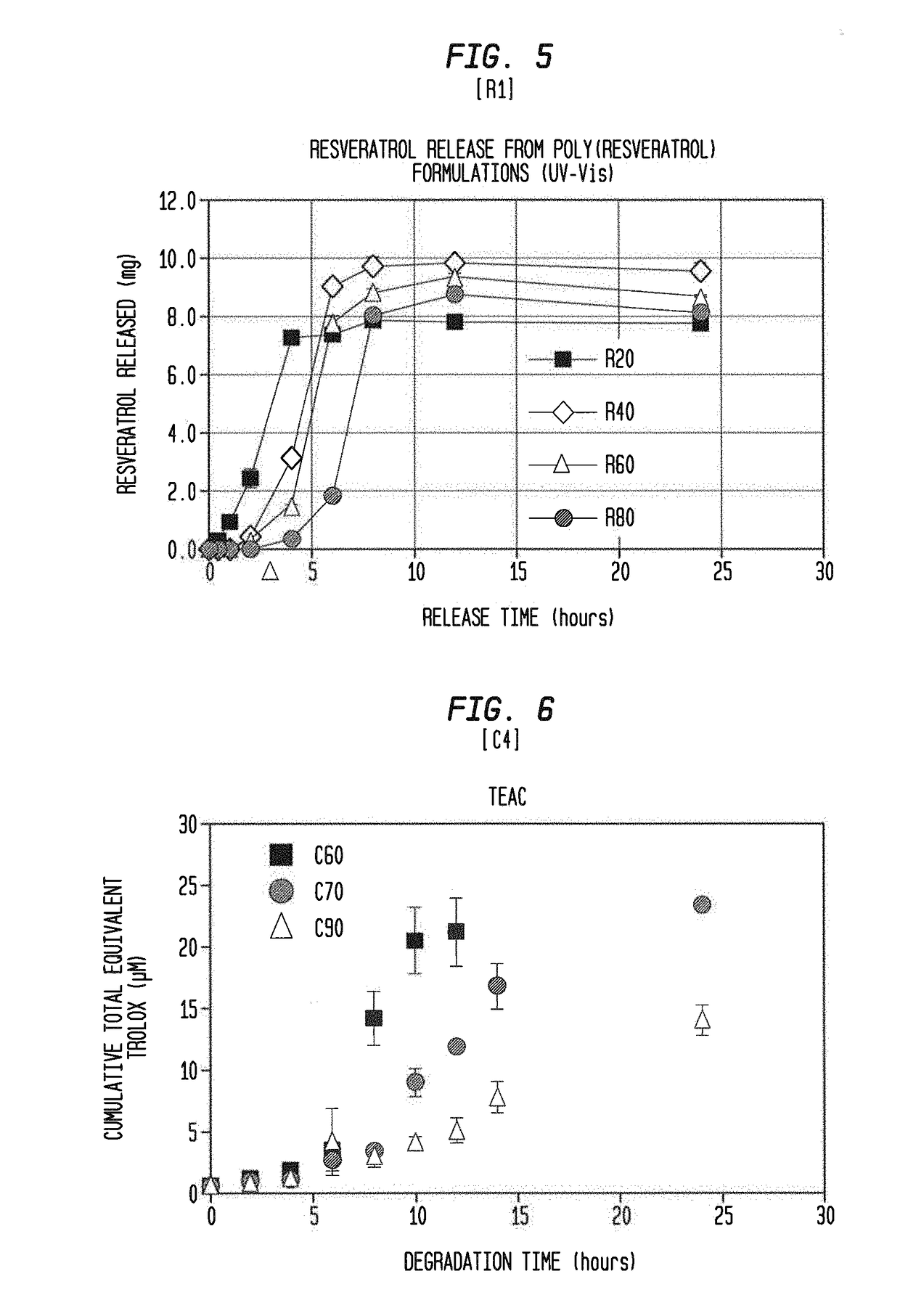Microparticle Enabled Delivery Structures, Methods of Preparing and Using Same
a technology of microparticles and delivery structures, applied in the direction of pharmaceutical delivery mechanisms, emulsion delivery, organic active ingredients, etc., can solve the problems of low solubility, poor stability, systemic side effects,
- Summary
- Abstract
- Description
- Claims
- Application Information
AI Technical Summary
Benefits of technology
Problems solved by technology
Method used
Image
Examples
example 1
Poly(Curcumin) Film Synthesis
[0085]Poly(curcumin) crosslinked films were synthesized via a single-step Michael addition reaction between curcumin multiacrylate (CMA) and the primary diamine crosslinker, 4,7,10-Trioxatridecane-1,13-diamine (TTD). Poly(ethylene glycol) diacrylate (PEGDA, MW 575) was added as a diacrylate co-monomer along with CMA to control the degradation characteristics of the resulting films. Poly(curcumin) films with four different CMA:PEGDA mole ratios w.r.t. acrylate groups, 60:40, 70:30, 90:10 and 100:0 were synthesized. These films and subsequently their microparticles are abbreviated as C60, C70, C90 and C100 respectively. The amount of TTD required to synthesize the films was calculated based on three different ratios of total acrylate to amine protons (RTAAP) of 0.8, 1.0 and 1.2. Briefly, C60 poly(curcumin) film with a target mass of 2 g was synthesized by dissolving 0.913 g of CMA in 1.5 ml of anhydrous methyl ethyl ketone (MEK). PEGDA (0.735 g) and TTD (0...
example 2
Poly(Curcumin) Microparticle Degradation and Curcumin Release
[0092]Five milligrams of the poly(curcumin) microparticle samples from Example 1 was suspended in 10 ml of phosphate buffered saline (PBS, pH 7.4) by bath sonication for 2 minutes. Since curcumin has poor solubility in water, 0.1% w / w sodium dodecyl sulfate (SDS) was added to the PBS to ensure complete solubility of the released curcumin. The sample suspension was incubated at 37° C. in a water bath with shaking at 70 rpm. Every 2 hours, the sample was centrifuged at 5000 rpm for 5 minutes, and a supernatant replaced with fresh PBS. The supernatant was stored at −20° C. for further analysis. This step was repeated until the 24 hour time point or until the poly(curcumin) sample has completely degraded. The collected supernatants were analyzed using a Varian Cary 50 Bio UV-Vis spectrophotometer with the absorbance measured at 420 nm (peak absorbance wavelength of curcumin). A few of the supernatant samples were also analyzed...
example 3
Tissue Adhesion Ability of Poly(Curcumin) Microparticle Formulations
[0095]Poly(curcumin) films with three CMA:PEGDA ratios (C60, C70 and C90 as described above) with each with three different RTAAP (0.8, 1.0 and 1.2) were synthesized and cryo-milled into microparticles following the exactly same procedure as described in Sections 2 and 3 above. These nine microparticle formulations were evaluated in vitro for their extent and duration of adhesive to porcine buccal tissue under simulated salivary flow.
[0096]Poly(Curcumin) Mucoadhesive Solution Preparation:
[0097]An oral barrier rinse that provides physical protection in addition to therapeutic effect of curcumin includes a viscous water-based mucoadhesive solution that serves as the physical barrier as well as the carrier for the poly(curcumin) microparticles. Mucoadhesive solution contains ingredients that adhere to a mucosal surface. Deionized water (100 ml) was stirred rapidly at 2000 rpm using an overhead mixer and a coil impeller...
PUM
| Property | Measurement | Unit |
|---|---|---|
| Fraction | aaaaa | aaaaa |
| Fraction | aaaaa | aaaaa |
| Time | aaaaa | aaaaa |
Abstract
Description
Claims
Application Information
 Login to View More
Login to View More - R&D
- Intellectual Property
- Life Sciences
- Materials
- Tech Scout
- Unparalleled Data Quality
- Higher Quality Content
- 60% Fewer Hallucinations
Browse by: Latest US Patents, China's latest patents, Technical Efficacy Thesaurus, Application Domain, Technology Topic, Popular Technical Reports.
© 2025 PatSnap. All rights reserved.Legal|Privacy policy|Modern Slavery Act Transparency Statement|Sitemap|About US| Contact US: help@patsnap.com



